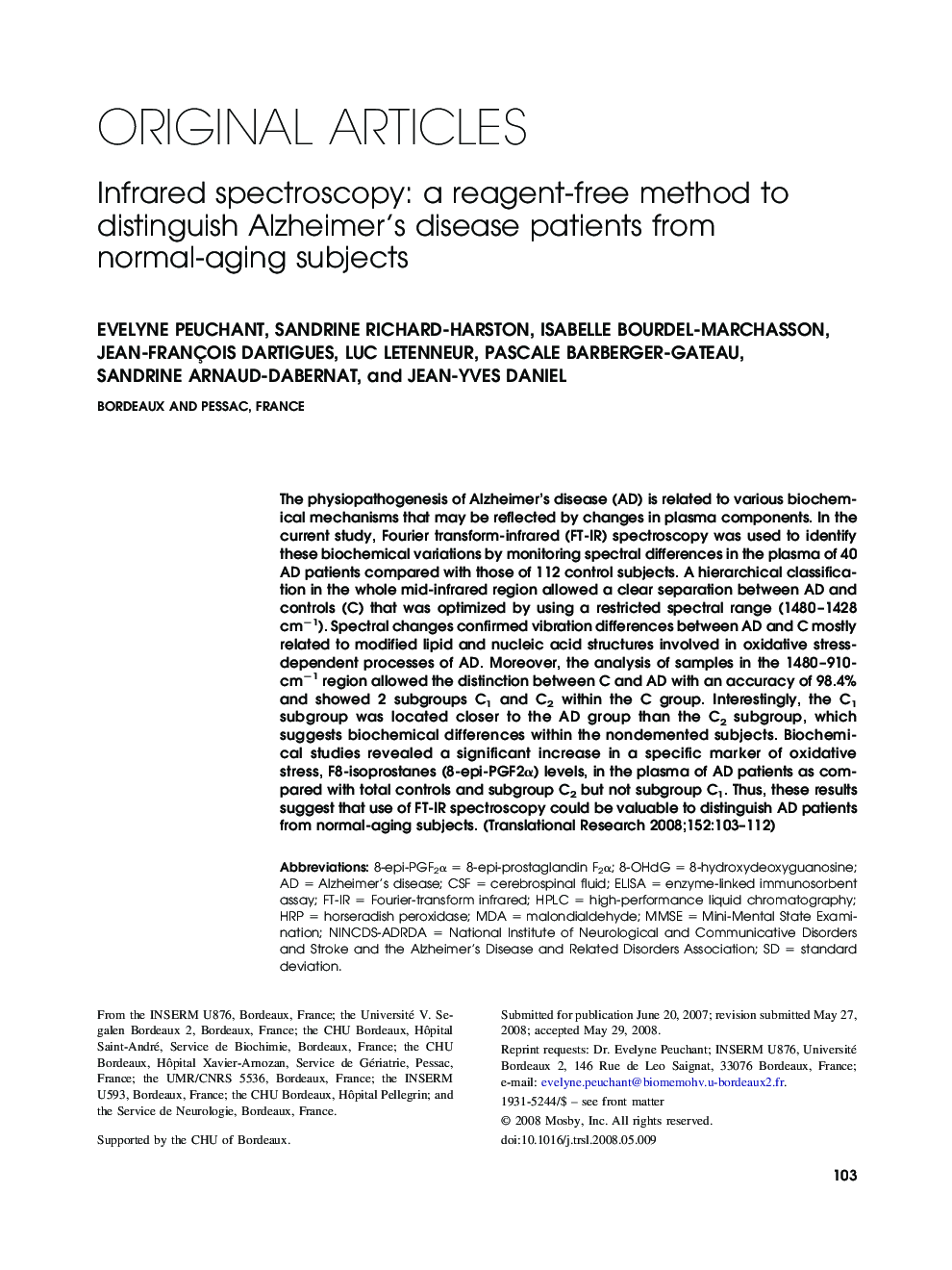| Article ID | Journal | Published Year | Pages | File Type |
|---|---|---|---|---|
| 3841252 | Translational Research | 2008 | 10 Pages |
The physiopathogenesis of Alzheimer's disease (AD) is related to various biochemical mechanisms that may be reflected by changes in plasma components. In the current study, Fourier transform-infrared (FT-IR) spectroscopy was used to identify these biochemical variations by monitoring spectral differences in the plasma of 40 AD patients compared with those of 112 control subjects. A hierarchical classification in the whole mid-infrared region allowed a clear separation between AD and controls (C) that was optimized by using a restricted spectral range (1480–1428 cm−1). Spectral changes confirmed vibration differences between AD and C mostly related to modified lipid and nucleic acid structures involved in oxidative stress-dependent processes of AD. Moreover, the analysis of samples in the 1480–910-cm−1 region allowed the distinction between C and AD with an accuracy of 98.4% and showed 2 subgroups C1 and C2 within the C group. Interestingly, the C1 subgroup was located closer to the AD group than the C2 subgroup, which suggests biochemical differences within the nondemented subjects. Biochemical studies revealed a significant increase in a specific marker of oxidative stress, F8-isoprostanes (8-epi-PGF2α) levels, in the plasma of AD patients as compared with total controls and subgroup C2 but not subgroup C1. Thus, these results suggest that use of FT-IR spectroscopy could be valuable to distinguish AD patients from normal-aging subjects.
